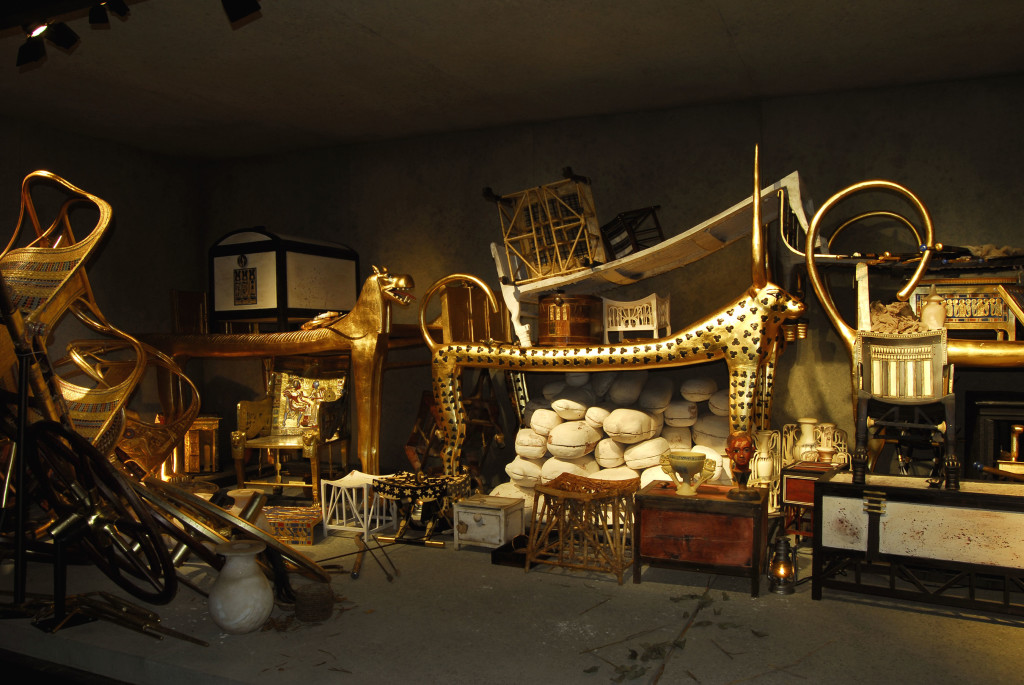 Even though the discovery of King Tutankhamun’s tomb by Howard Carter happened almost a century ago, it continues to fascinate. The nearly intact chambers, and their contents, hidden for over three thousand years, were once again able to be seen after its unearthing in November 1922. The tomb contained over 5000 objects of immense value. Not merely of a monetary value, but an extreme worth to help further understand, learn from, and appreciate the history and culture of the time.
Even though the discovery of King Tutankhamun’s tomb by Howard Carter happened almost a century ago, it continues to fascinate. The nearly intact chambers, and their contents, hidden for over three thousand years, were once again able to be seen after its unearthing in November 1922. The tomb contained over 5000 objects of immense value. Not merely of a monetary value, but an extreme worth to help further understand, learn from, and appreciate the history and culture of the time.
One of the treasures from this exploration, however, is not able to be displayed behind glass cases and is, therefore, sometimes missed. It is a prize of knowing the perseverance and strength it took for its eventual find by Howard Carter. I admire this part of the story as much as I do the prizes found under the sands. It offers encouragement and stands as demonstration that if you truly believe in something, don’t ever give up. Treasures do await and can be recognized in so many ways.
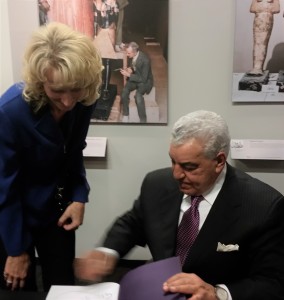 I recently had the wonderful opportunity to visit the exhibition of this incredible tomb’s treasures, and listen to a lecture by Zahi Hawass, Egyptian archeologist and former Minister for Antiquities. Dr. Hawass spoke of his passion for protecting treasures, like the relics found in King Tut’s tomb, and others. He shared current progress happening towards continued excavations, mentioned work being done to preserve future (and past) artifacts unearthed, and offered his opinion on various theories, beliefs, and concerns surrounding Egyptian archeology.
I recently had the wonderful opportunity to visit the exhibition of this incredible tomb’s treasures, and listen to a lecture by Zahi Hawass, Egyptian archeologist and former Minister for Antiquities. Dr. Hawass spoke of his passion for protecting treasures, like the relics found in King Tut’s tomb, and others. He shared current progress happening towards continued excavations, mentioned work being done to preserve future (and past) artifacts unearthed, and offered his opinion on various theories, beliefs, and concerns surrounding Egyptian archeology.
He also spoke briefly on Howard Carter. Although I was familiar with Carter’s dedication to finding the boy king’s tomb in the Valley of the Kings, when I heard Dr. Hawass tell the story during his lecture, something struck deeper. Maybe it was the veneration for Carter in Hawass’ voice that helped me fully grasp how remarkable the discovery actually was, and how it almost didn’t happen.
It’s a story of courage, hope, belief, definitely persistence, and then, only after much frustration, struggle, heartbreak, and failure, finally success.
A journey few have the strength to continue to the end.
 Carter’s story resonates with Medieval Grail Quests, and what I find amusing is a ‘Sacred Vessel’ within the tomb was found and cherished by Carter. It was one of his favorite pieces and could be seen as a reward for enduring the quest to find the vault. He had this ‘Grail’s’ inscriptions placed on his tombstone (more below).
Carter’s story resonates with Medieval Grail Quests, and what I find amusing is a ‘Sacred Vessel’ within the tomb was found and cherished by Carter. It was one of his favorite pieces and could be seen as a reward for enduring the quest to find the vault. He had this ‘Grail’s’ inscriptions placed on his tombstone (more below).
Carter believed, without support, that he could find a royal tomb, intact, still in the Valley of Kings. It was believed by others the area was exhausted at the time, and he was thought foolish by his peers for spending so many seasons digging there.
He had the opportunity to yield, and quit his mission, when after years of searching, Lord Carnarvon, who supplied the funds for Carter’s works, had said he was tired of his fruitless digs and wasn’t going to invest in them anymore. Carter could have walked away, gave up, but he was determined, and told Lord Carnarvon if he wouldn’t fund him, he would fund the next season himself. Carter was that certain a tomb was there to be found.
During Hawass’ speech that night, I listened to everyone, and myself, laugh when Hawass continued with the story. He said, Lord Carnarvon, exasperated and after hearing Carter’s reply, then decided to pay for one more season of digging, but only for the reason he was afraid Carter would actually find a tomb without him.
But think about that statement. Carter must have conveyed a strong enough conviction to Lord Carnarvon that he would find a tomb. His belief, hope, and determination, overcame feelings of discouragement and doubt. This faith was felt by his investor, Lord Carnarvon.
Year after year, of sifting through the sands, nothing but more sand and ordinary rock appeared. But then, on November 4th, 1922, just when lost hope for a find was being felt by searchers, possibly even by Carter, an extraordinary rock was uncovered.
The circumstances around the find of this rock is remarkable. A young boy, who brought water in jars to the site each day, needed to create a small hole in the newly excavated sands for the pointed bottom of the jars to sit upright in. Doing so the morning of the 4th, the boy, Hussein Abdel Rasoul, noticed a flat stone after digging. This stone turned out to be the first step of the stairway down to King Tut’s tomb hidden below.
Carter telegraphed Lord Carnarvon, who was back home, to tell him of the discovery and then waited for him to arrive to open the tomb’s door.
On November 24th, seals of Tutankhamun were noticed on the doorway, and on November 26th, a small hole was chiseled through the door by Carter so he could look inside. Lord Carnarvon, his daughter Lady Evelyn, and an assistant, Arthur Callender, were with Carter. The famous question was asked by Lord Carnarvon as Carter peered in;
“Can you see anything?” and the unforgettable reply by Carter;
“Yes, wonderful things.”
Excavations continued. The most complete and spectacular treasures were brought to see the light and are cherished by all who see them today.
As mentioned above, one of Carter’s most special finds, however, was a Goblet formed from Alabaster with incised inscriptions painted in blue. These inscriptions were later placed on his gravestone because he loved them so. He called the vessel ‘the wishing cup’ after the following words on his precious vessel:
“May your spirit live, may you live one million years, one who loves Thebes and dwells in it, your face towards the northern wind; may your eyes see the good place.”
The cup is in the shape of a lotus, and symbols on the cup represent rebirth and everlasting existence. Each time the King would drink from the flower formed vessel, he was believed to be receiving ‘life’.
It is a ‘Holy Grail’ in form, symbolism, and in appropriate prize for Carter’s journey.
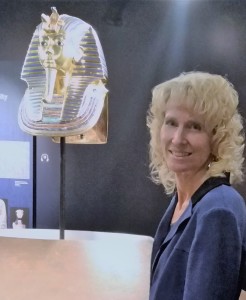 Carter’s steadfastness is a quality to greatly admire and contemplate. What if he would have stopped? It’s a question we will never know the answer to because he kept on. But when thinking upon this, it leads to the reverse situation and what can haunt us. It is realizing we would never know the answer to those situations where we don’t keep on, and stop. What if we kept on?
Carter’s steadfastness is a quality to greatly admire and contemplate. What if he would have stopped? It’s a question we will never know the answer to because he kept on. But when thinking upon this, it leads to the reverse situation and what can haunt us. It is realizing we would never know the answer to those situations where we don’t keep on, and stop. What if we kept on?
The inspiration we can gain from deeply considering that question, and knowing the stories of treasures found when one keeps on, helps us all to continue on our own journeys. The discovery of King Tut’s tomb is one of Carter’s greatest achievements, but it did not come easy.
Nevertheless, in the end he did find a treasure with values of the Grail and a feeling of contentment he took to the grave. He persisted, conquered fears, doubts, and obstacles, and reached his ambition.
A story for all of us to take hold of.
Best of luck with whatever you seek!

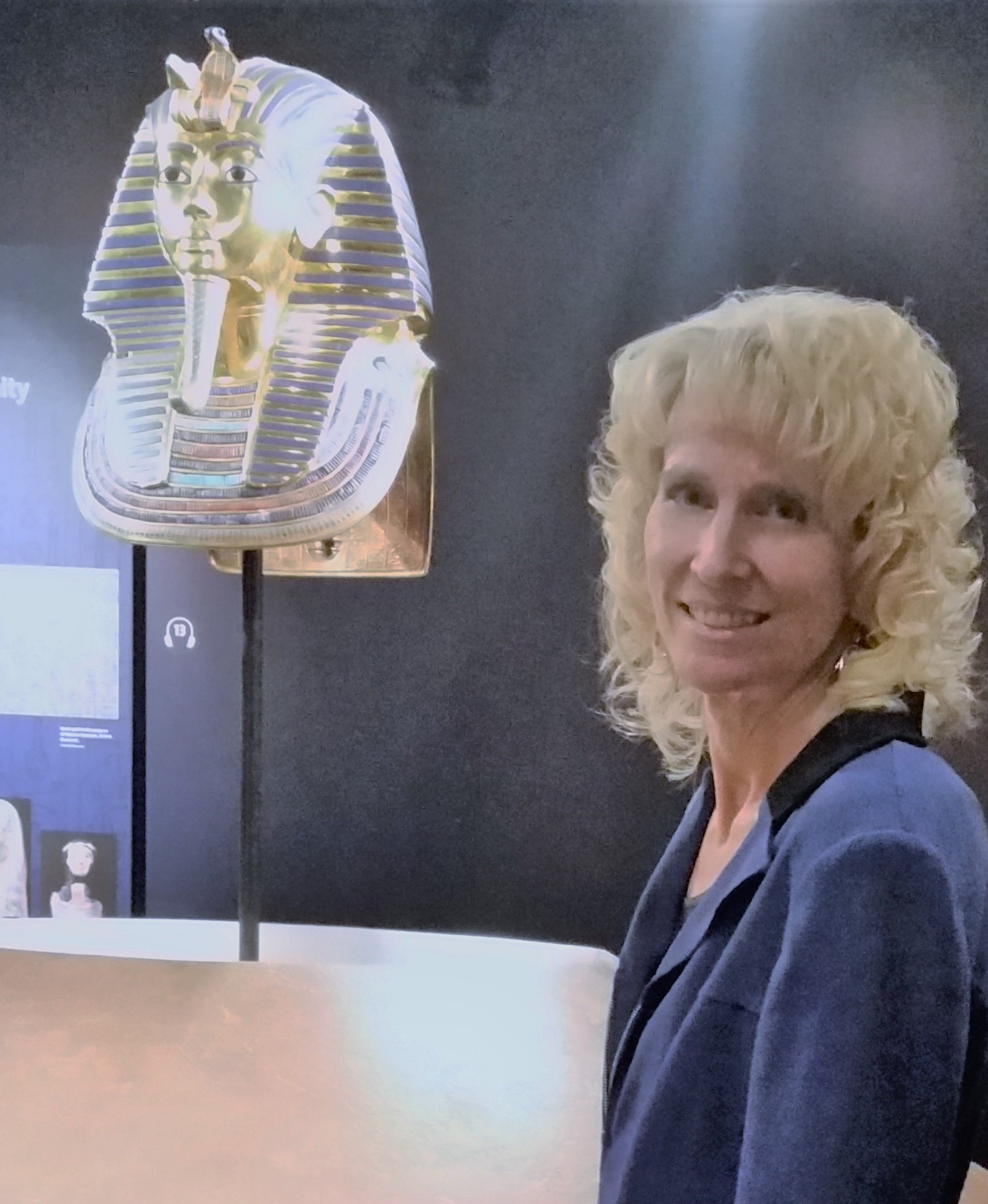
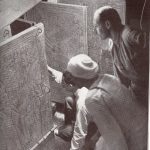
Wow Jenny, what a wonderful experience you had! A lesson in persistence FOR SURE! Thanks enjoyed the article very much.
Truly a remarkable experience. I’m happy beyond measure you had a chance to see this Jenny. Nothing takes the place of seeing such things in person.
John
Thanks all….it was a great time and inspiring night….:)
Jenny, many thanks for recounting your exciting trip to visit Dr. Hawass. He’s very enjoyable on the history channel. It was so much fun hearing the grail story and seeing Tutankhamans treasure through your eyes.
Thanks, Jenny! That is an amazing with a very VALUABLE life lesson. I can’t even imagine Carter’s thoughts as he peered into King Tut’s tomb for the first time. It’s the stuff of dreams. That’s what makes it so fun to read about…and imagine…and drool. (slurp! …sorry) 🙂
The only real Egyptian artifacts that I have seen were in the Ramesses II exhibition which…strangely…I saw in two distant locations in 1986. The exhibition was on display in Provo, Utah very near to where I grew up …or got older, anyway. 🙂 The exhibit went straight from Provo to Vancouver, British Columbia (Expo 86) where I saw it AGAIN. My uncle lives there so it was easy to attend the Expo.
I tried my best to go somewhere exotic with my wife for our honeymoon 11 years ago. All I could afford was a weekend in Vegas at The Luxor. They have the King Tut replica exhibit there. 🙂 Obviously, that’s nowhere near as cool as the real thing…but it’s always fun to dream, isnt it? I don’t have to ask you that question, Jenny. I know what you’ll say. Thanks, again. 🙂
Oops. I mean that’s an amazing STORY with a valuable life lesson. NEVER give up!
Also, I just googled and found out that the King Tut Exhibit moved from Luxor in 2008.
@JC1117, I’m right there with you…I love the history of Lord Carnarvan & Carter’s relationship; his hope of discovery; belief in his research. How sweet the dreams that are finally realized, after seasons of determination have passed. A treasure gained hurriedly is not as sweet or appreciated.
The news of Randy B hit most of us following TTOTC like a lead weight in the gut. So many good people trying to help in any way they are able. I needed a day in the outdoors today to clear my brain and remember I am still alive, and should continue to live everyday to the fullest, trying to bring joy to others in all circumstances. None of us are any good if gloom holds down our spirits.
@Jenny, thank you for continuing to post interesting, positive content. It’s most welcome.
Hello, 42. I could use a long day in the outdoors, too. It’s good for the soul.
This stuff is so exciting to read about. I remembered a news story from a little while ago about another potential chamber connected to King Tut’s tomb. Using infrared thermography researchers noticed a temperature differential on the lower corner of the wall in the tomb. I found the story here:
http://www.dailymail.co.uk/news/article-3308292/Scientists-two-hidden-chambers-King-Tutankhamun-s-tomb-testing-temperature-tomb-s-walls.html
It’s fascinating! Some believe it to be the tomb of Queen Nefertiti…who some also believe to be King Tut’s Mother.
JC1117, that was a terrific article on Nephertiti and possiblility of her burial chamber adjacent Tutmosis. If proven she was co-regent and Tut therefore placed with her; it would seemingly account for the overwhelming riches in Tut’s chambers (him being a ruler of lesser importance). The bulk of treasure was possibly placed there for Nefertitis ‘eternal passage’ prior to Tut’s entombment.
Did Egypt’s ministry of antiquities allow further exploration? Guessing thats a huge roll of bureaucratic duct tape to peel away. Anyway thanks for your interesting post. I sure enjoyed reading it.
Thank-you, Jenny. That tomb was almost like a magnet for Carter, and kept pulling until that stone was (accidentally) discovered.
Where is the exhibition that you visited (New York?). There is also recent news about the damage previously done to King Tut’s mask.
http://www.cnn.com/2016/01/24/africa/king-tut-broken-mask-charges/index.html
A related topic, Zahi Hawass discovers the grave of Osiris … includes some quite interesting commentary
http://wolf.mind.net/osiris/index.html
.
Yes, it was in NYC….I posted this as a Tuesday’s Treasure on my Facebook page and mentioned NYC, but I see I didn’t specify that in the article. I am not sure how long the exhibit is there.
Hawass mentioned the mask, and said it has been restored to amazing shape…… which is nice. It is so interesting the detail they put into things they ‘buried’…..for the life after. A wonderful belief.
thanks for the additional links…..
How was the snowstorm? My son lives in York Pa and received 32 inches…lol…
Thanks for the reply, Jenny. We had about 2 feet of snow, finally getting roads back to drivable condition. Both kids’ schools are still closed (and will be today). I grew up in the Harrisburg area, still have a sister in Palmyra. Sounds like that area got it a bit worse than our section of MD. ( We had a get together in York around Christmas time, for dinner at the Aroma Buffet ).
By the way, I just picked up a cheap metal detector (Discovery 2200, $80) at Costco, in case you’re looking for a basic model. I am going to use it as an introduction to metal detectors, and make more sense out of the features on a Garret, etc. before I buy a more advanced model.
Be Well
Great Article, Jenny!!! And I learned something from it. The moment you mentioned the word “Allibaster,” (a reference to the Vessel), it brought to mind a similar article I had read regarding Alibaster Jars filled with annointing oils also found in Egyptian Tombs.
What I found peculiar about that article is that it mentioned the fact that when the oils were opened up, they appeared as fresh as the day that they were first put into the jars.
I started to wonder “Why Alibaster?” What is it made of anyway? Lately, I have been reading a lot about crystals, and was curious to know if it had something to do with that.
So I looked up the word “Allibaster” and discovered that it’s made of 2 different types of Crystal minerals … Gypson and Calcite. Both of these ingredients are found in Limestone, from which the great pyramids were built. Calcite is also found in Lapis Lazuli, which the Egyptians made jewelry out of.
But there’s more. The moment that I read that Alibaster was made out of Gypson and Calcite, I recalled the fact that The Crystal Selenite, which is made out of Gypsum, is regarded as a “High Spiritual Vibration Crystal”. Calcite is also regarded as a Crystal with some Spiritual properties.
So the next question became “Did the Egyptians understand this?” I think they did. I’m assuming that the Allibaster isn’t made of Carved Limestone, but was probably melted from the Crystals Gypson and Calcite. Gypson is a fragile Crystal, which doesn’t hold up to water, so the Calcite was added to help give it Strength. The problem is that melting the crystals defeats the spiritual properties, a fact that the Egyptians might not have understood.
It’s also my understanding that new evidence has surfaced pointing to the fact that the Egyptians might have melted the limestone blocks used to build the great pyramids, which is the reason why each of the blocks fit so perfectly together.
Here are the Spiritual properties of Gyson (Selenite) and Calcite, just in case your interested;
Selenite
http://www.healing-crystals-for-you.com/selenite-crystals.html
Calcite
http://www.healing-crystals-for-you.com/calcite-crystals.html
A recent discovery
http://www.msn.com/en-us/news/world/underwater-discovery-solves-2000-year-old-mystery/vi-AAgZvNn
The lotus used as a symbol for life is still alive and well in India. In Europe, where lotus aren’t found except in the warmest places in the South, it isn’t well known.
The impression you get of Carter is one of absolute self faith. His name became a synonym for steely determination (it was appropriated by various science fiction writers for their heros). His loyalty to and friendship with Carnarvon also went way beyond the usual patron- client relationship-